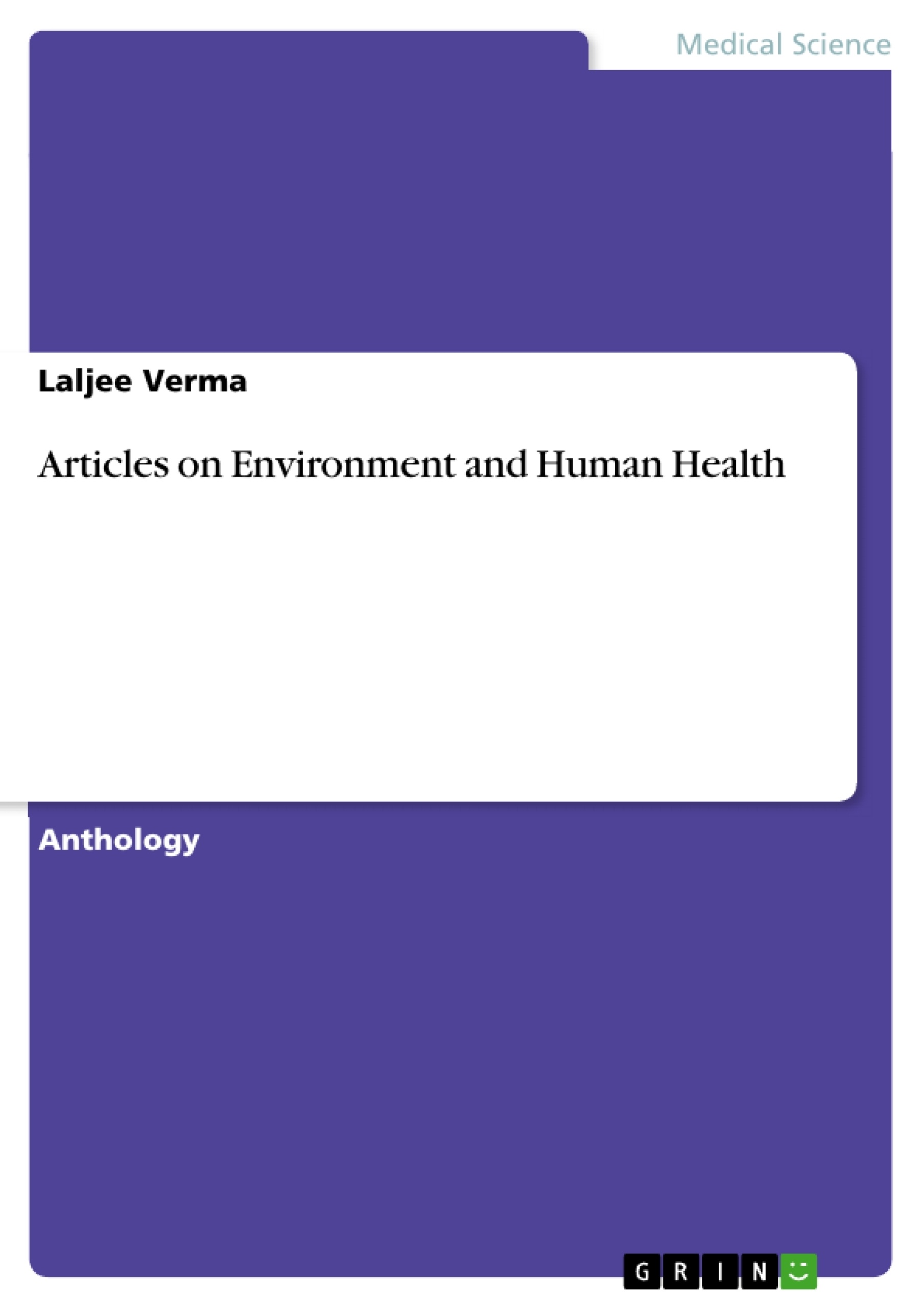This book is a collection of several essays by the author from the years 1999 to 2012. They all deal with the topic of environment and Human Health.
Environmental pollution is on the rise affecting human health. These essays outline such pollutants with focus on waste management.
Essays included on the following topics: Egocentric to Eco-Centric; Health Inequality & Sustainable Development in India; Managing Hospital Waste Is Difficult - How difficult; Pollutants & Human Health; Compromise……….Compromise; Hospital Waste Management: Missing Links; Hospital Waste Causing Havoc with Human Health; Injection Waste Disposal in India; Effects of Vermicomposting on Microbiological Flora of Infected Biomedical Waste; Human Trafficking and HIV/AIDS; Case Study: Complaint of Sukhdev Vihar Residents on Health Concerns due to Emission from a nearby Incinerator; Food Waste Management: An Innovative Approach; Healthcare in India: The Road Ahead.
Inhaltsverzeichnis (Table of Contents)
- EGOCENTRIC TO ECO-CENTRIC.
- HEALTH INEQUALITY & SUSTAINABLE DEVELOPMENT IN INDIA....
- MANAGING HOSPITAL WSTE IS DIFFICULT. HOW DIFFICULT?
- POLLUTANTS & HUMAN HEALTH
- COMPROMISE. .......COMPROMISE
- HOSPITAL WASTE MANAGEMENT: MISSING LINKS.
- HOSPITAL WASTE CAUSING HAVOC WITH HUMAN HEALTH
- INJECTION WASTE DISPOSAL IN INDIA
- EFFECTS OF VERMICOMPOSTING ON MICROBIOLOGICAL FLORA OF
INFECTED BIOMEDICAL WASTE - HUMAN TRAFFICKING AND HIV/AIDS
- CASE STUDY: COMPLAINT OF SUKHDEV VIHAR RESIDENTS ON
HEALTH CONCERNS DUE TO EMISSION FROM A NEARBY
INCINERATOR - FOOD WASTE MANAGEMENT: AN INNOVATIVE APPROACH ........
- HEALTHCARE IN INDIA: THE ROAD AHEAD...
Zielsetzung und Themenschwerpunkte (Objectives and Key Themes)
This collection of articles explores the relationship between the environment and human health, specifically in the context of India. The primary objective is to raise awareness about the ecological challenges facing the country and their impact on human well-being.
- The delicate balance of the ecosystem and human activities
- The impact of human-induced environmental degradation on health
- The importance of sustainable development and waste management practices
- The role of healthcare in addressing environmental health challenges
- The interconnectedness of social, economic, and environmental factors affecting health
Zusammenfassung der Kapitel (Chapter Summaries)
- EGOCENTRIC TO ECO-CENTRIC. This chapter discusses the anthropocentric view of nature, highlighting the human tendency to exploit and dominate the environment. It argues for a shift towards an eco-centric perspective, emphasizing the importance of ecological balance and recognizing humans as part of the larger ecosystem.
- HEALTH INEQUALITY & SUSTAINABLE DEVELOPMENT IN INDIA.... This chapter explores the link between environmental degradation and health inequalities in India. It examines the impact of pollution, inadequate sanitation, and unsustainable development practices on the health of vulnerable populations.
- MANAGING HOSPITAL WSTE IS DIFFICULT. HOW DIFFICULT?......... This chapter focuses on the challenges of managing hospital waste in India. It discusses the various types of waste generated by hospitals, the environmental and health hazards associated with improper disposal, and the need for effective waste management strategies.
- POLLUTANTS & HUMAN HEALTH This chapter delves into the effects of various pollutants on human health. It examines the impact of air pollution, water pollution, and soil contamination on respiratory health, cardiovascular health, and other health outcomes.
- COMPROMISE. .......COMPROMISE This chapter explores the concept of compromise in the context of environmental protection and economic development. It discusses the need for a balanced approach that ensures both sustainable development and protection of the environment.
- HOSPITAL WASTE MANAGEMENT: MISSING LINKS. This chapter highlights the shortcomings in hospital waste management practices in India. It identifies key missing links and discusses the need for improved infrastructure, awareness, and regulation.
- HOSPITAL WASTE CAUSING HAVOC WITH HUMAN HEALTH This chapter focuses on the specific health risks associated with improper hospital waste management. It explores the potential for infections, contamination of water sources, and the spread of diseases.
- INJECTION WASTE DISPOSAL IN INDIA This chapter examines the challenges of managing injection waste in India. It discusses the environmental and health hazards associated with improper disposal and the need for safe and effective waste management strategies.
- EFFECTS OF VERMICOMPOSTING ON MICROBIOLOGICAL FLORA OF
INFECTED BIOMEDICAL WASTE This chapter explores the potential of vermicomposting as a sustainable method for managing biomedical waste. It discusses the benefits of vermicomposting in terms of reducing waste volume, nutrient recovery, and pathogen reduction. - HUMAN TRAFFICKING AND HIV/AIDS This chapter examines the intersection of human trafficking and HIV/AIDS, highlighting the vulnerabilities of trafficked individuals and the impact on their health. It explores the need for targeted interventions and public health strategies to address this complex issue.
- CASE STUDY: COMPLAINT OF SUKHDEV VIHAR RESIDENTS ON
HEALTH CONCERNS DUE TO EMISSION FROM A NEARBY
INCINERATOR This chapter presents a case study of a community's struggle with environmental health issues related to industrial pollution. It illustrates the real-world consequences of environmental degradation on human health and the need for environmental justice. - FOOD WASTE MANAGEMENT: AN INNOVATIVE APPROACH ........ This chapter explores innovative approaches to managing food waste in India. It discusses the environmental and economic benefits of food waste reduction and explores potential solutions such as composting and anaerobic digestion.
- HEALTHCARE IN INDIA: THE ROAD AHEAD... This chapter discusses the future of healthcare in India, highlighting the challenges and opportunities in the context of environmental health. It emphasizes the need for integrated approaches that address both the environmental and social determinants of health.
Schlüsselwörter (Keywords)
This collection of articles focuses on key themes related to environmental health in India, including sustainable development, waste management, pollution, health inequalities, and the impact of human activities on the ecosystem.
- Citation du texte
- Dr Laljee Verma (Auteur), 2012, Articles on Environment and Human Health, Munich, GRIN Verlag, https://www.grin.com/document/377059



